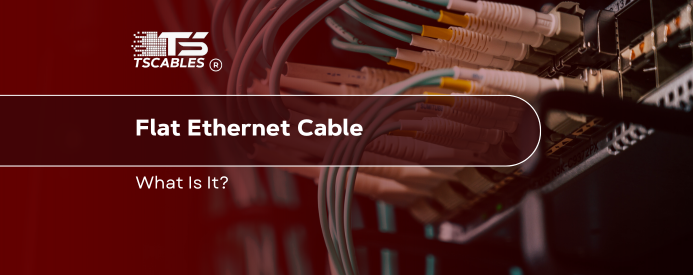Ethernet cables link your internet devices to the network. But they don’t all look the same. Some are round, others are flat. Ever seen a thin cable that slips under a rug or hugs a wall? That’s a flat Ethernet cable. People like them for their low profile and neat appearance.
They work just like regular Ethernet cords but have a different shape and feel. But is that shape just for looks, or does it change how it works? This article walks you through what a flat Ethernet cord is, how it works, and when it’s the right fit.
What is Flat Ethernet Cable?
A flat Ethernet cable is exactly what it sounds like. It is flat in shape, not round. Instead of having a circular body like most network cables, it’s thin and pressed. A key feature of this cable is that it lies flat and often runs along baseboards, under carpets, or behind furniture with ease.
The flat design doesn’t stop it from being a proper Ethernet cable. Whether it’s a flat Cat5 cable or a flat Cat6 Ethernet cable, it still transfers data between your modem, router, and devices. Its shape helps people set up home or office networks without bulky cords showing or sticking out.
What Makes a Flat Ethernet Cable?
Flat Ethernet cables don’t use the same inner structure as round ones. Inside, the wires are arranged side by side in a ribbon layout. That’s what keeps it flat and flexible.
Each flat LAN cable still holds twisted pairs, just like round cables, but the twist is usually looser. This twist affects shielding and how well the cable handles outside interference. Because of this, flat cable Ethernet might not always be the top choice for noisy environments or super high-speed demands.
But don’t count them out. A flat Cat6 cable still does the job well for most homes and smaller offices. And if space-saving is your goal, it’s hard to beat a LAN cable flat option.
Flat vs. Round Ethernet Cable: Key Differences You Need to Know
The shape isn’t just for style. There are several important differences between flat vs. round Ethernet cable types. Let’s break them down.
Internal Structure
A round Ethernet cable usually has better shielding. Its wires are wrapped tightly with protective layers. This reduces electrical noise and improves performance in longer runs.
On the other hand, Ethernet flat cable spreads wires side by side, making the cable thinner but less protected from interference. That’s why they’re often used for short, visible runs.
Flexibility and Routing
If you need to go under a rug or around a door frame, then flat Ethernet cords can do that without bulging. Flat or round Ethernet cables can both route well, but flat ones do it more discreetly.
Round cables may not bend as easily without bulging. In tight corners or under surfaces, Cat 5 cable or flat Cat 6 cable usually fits better.
Performance in Longer Distances
In longer setups, especially in places with lots of electronics, flat vs. round Ethernet cable matters more. Round ones tend to handle long distances and electrical noise better due to their insulation and shielding.
Still, Cat6 flat Ethernet cable performs well enough for typical home runs, which is close to 30 to 50 feet. Just keep it away from power lines or other heavy-duty electronics.
Durability Over Time
Flat Ethernet cables can wear out faster if bent too tightly over time. The wires inside are more exposed to pressure because they’re not packed in a round shape.
That doesn’t mean they’re weak. But if you're plugging and unplugging a cable daily, a round one might hold up longer. Still, for clean installs along walls, an Ethernet cable on the wall works great when flat.
Aesthetics and Setup
Let’s be honest, flat Cat6 cable looks neater. It can hide under rugs, fit behind furniture, and stick along walls with adhesive clips. A Cat6 flat network cable doesn’t clutter up space like thick, round cords. So, if appearance and saving space matter, the flat Ethernet cable often wins here.
When To Use Flat Ethernet Cables?
There’s a right time and place for a flat Cat 6 cable. These cables aren’t for every situation, but they solve certain problems better than round ones. Let’s walk through some common situations where flat Ethernet cables are the better pick.
Home Office Setups
If your router is across the room and you want the cable to hug the wall, a flat Ethernet cord is your friend. It’s less of a tripping hazard and easier to hide. It keeps things neat and lets you run cable along the edges of floors or behind desks without bulging out.
Running Under Rugs or Carpet
If you need cable to travel across a room without drilling into walls, then flat Ethernet runs smoothly under rugs. Round cables can show bumps or even damage the rug backing. This is where a flat Cat5 or flat Cat6 earns its keep. It’s low-profile, safe, and out of the way.
Wall-Mounted Installs
An Ethernet cable on the wall looks messy unless it’s flat. Stick-on clips work great with flat cable Ethernet and hold it tightly against the wall. This setup works especially well in apartments or rentals where drilling isn’t an option.
Short Network Runs
Short runs between a modem and a nearby PC or gaming console don’t need heavy-duty cable. Cat6 flat Ethernet cable gives good speed and a clean layout without extra bulk. In these small jobs, you’ll get speed without the mess.
Tight Spaces or Portable Gear
If you need to pack cables into a travel kit or snake them through tight AV cabinets, flat Cat5 cable takes up less space and bends easily. Even tech bags benefit. A coiled flat Ethernet cable takes up less room and doesn’t twist up as easily as round ones.
Final Thoughts
A flat Ethernet cable can be a smart choice where neatness, space, and flexibility matter. It won’t always win for raw power, but for everyday use? It delivers solid, steady performance without the bulk.
TS Cables offers quality flat Cat6 cable options ready to clean up your network without sacrificing speed or reliability.
FAQs
Why choose flat cable Ethernet for walls?
It sits flush against the surface, hides better, and looks cleaner in visible spaces like living rooms or offices.
Is Cat6 flat network cable fast enough?
Yes. For most home setups, Cat6 flat Ethernet cable gives speeds up to 1 Gbps with no trouble on short to medium runs.
Can you use flat Ethernet cables for gaming?
Yes. A flat Ethernet cord gives stable wired connections with less lag than Wi-Fi, making it a great option for gaming.
Do flat Ethernet cables break easily?
Not usually. Just avoid tight bends. Flat Ethernet cables hold up well with gentle handling and proper routing.
Are flat vs. round Ethernet cable speeds different?
No. Both can deliver the same speeds, but round cables often perform better at longer distances due to stronger shielding.






